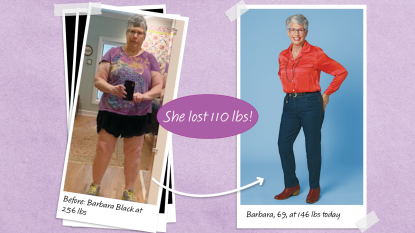Why Do More Women Than Men Suffer From Alzheimer’s Disease? Learn About the Risk Factors and Early Detection
Biology, lifestyle, genetics, or something else entirely?

Alzheimer’s disease may not be a woman-specific ailment, but it is one that seems to target women strikingly more than men. In fact, women appear to be at the epicenter of the Alzheimer’s crisis. Almost two-thirds of Americans with Alzheimer’s are female. By the time a woman reaches age 66, she has a 1-in-6 chance of developing AD. This is in comparison to a 1-in-11 chance for men. And women in their 60s are twice as likely to develop AD as they are to receive a breast cancer diagnosis.
Why are women more susceptible to the disease than men? At this point, scientists can only guess, but a number of factors appear to be at work. Some say a woman’s biology, such as the anatomy of a woman’s brain or brain-glucose metabolism, could play a role. Others speculate that lifestyle factors might contribute to the onset of the disease. And some believe genetics plays a strong role.
Female Risk Factors
Women live, on average, five years longer than men. This is why experts once attributed the prevalence of AD among women to the simple fact that the disease makes itself more widely known in our later years. But more recent evidence refutes the idea that age is the only factor. Results from two British studies found that dementia cases in the UK have fallen by 20 percent, mostly among men over age 65, while that shift has not occurred in women. Others point out that Alzheimer’s is a disease that starts some 20 years before there is a diagnosis, when life-span differences aren’t a factor.
Some scientists suspect a possible link between menopause and AD. Some of the most common symptoms of menopause — night sweats, hot flashes, depression — are triggered by the brain as levels of estrogen begin to decline. Research shows that estrogen protects the brains of females from aging, jump-starting the growth of brain cells, and preventing the buildup of plaque, the main culprit of AD. As estrogen ebbs in a woman’s body, the brain may become more vulnerable to plaque and the subsequent brain-choking tangles associated with AD. And imaging scans on healthy middle-aged women have shown that premenopausal women had more brain activity than postmenopausal women. Such findings have led researchers to argue that hormone replacement therapy — taking supplemental estrogen — might alleviate AD symptoms if the drugs are given before menopause begins. However, experts caution that more research needs to be done.
A Natural Predisposition
Women also have a higher incidence of depression than men — up to twice the risk — and depression links to a higher dementia risk. In addition, depression in women is associated with a smaller hippocampus (the area of the brain responsible for memory formation) as well as faster shrinkage of the hippocampus. This same association is not seen in men.
Genetics may also be at play. The apolipoprotein E (APOE e4) gene links to Alzheimer’s. Women with APOE e4 are more likely to develop mild cognitive impairment or AD compared with men who also carry the gene. And they are more likely to perform worse on memory tests, have greater brain atrophy, and a lower brain metabolism. They may also progress to AD from mild cognitive impairment faster than men. According to researchers from the University of Southern California, the risk of AD in women increases fourfold if they have one copy of the APOE e4 gene. And researchers at Stanford say women who carry the gene are twice as likely to eventually develop AD as women who don’t. Meanwhile, men with APOE e4 had only slightly increased risk compared to men who are not carriers.
Early Detection
Women typically perform better on tests for verbal memory, a key factor in making an Alzheimer’s diagnosis. So while women do better on the tests, they may already have some of the underworking of dementia taking place, and a full diagnosis and important treatments may not take place promptly. Experts say that by the time some women receive an AD diagnosis, they’ve already developed more of the disease factors and have a more rapid decline compared to men. Some advocates are pressing for sex-specific cutoff scores on tests that will help address this issue.
Taking Action
While you can’t control factors like depression or genetics, there are steps women can take to curb their risk of AD. One of the biggest may be physical activity. Research shows that people who exercise are less likely to develop dementia — especially Alzheimer’s. One recent study published in the journal Neurology found that women who were at a high fitness level were 88 percent less likely to develop dementia, compared to those at a medium fitness level. And even when the women at a high level of fitness did develop dementia, they did so an average of 11 years later than non-exercisers.
However, it’s also true that women tend to be less physically active than men, according to the Centers for Disease Control and Prevention. More than 60 percent of women in the US do not engage in physical activity. In addition to its role in reducing cognitive decline, exercise also helps curb depression, improve blood pressure, and reduce other risks associated with AD.
Women make up a disproportionate percentage of caregivers in the US. Female caregivers are more likely to leave a job to care for a family member. And caregivers may be at a higher risk of cognitive decline or dementia than non-caregivers. That’s why it’s important to make sure, while you are caring for a loved one, that you still take time for yourself. Try to get a plan in place that allows you to take regular breaks for exercise, eating well, and simply having some alone time to meet your own needs.
A version of this article appeared in our partner magazine Alzheimer’s: New Hope for a Cure, in 2020.













